'Najeon Chilgi' design collection
Product Design
Creative Director. Chung Yeon Jung
Designer. Jang Min Jee, Ji Hwa Yeon
Collaborative Product Development
Cultural Foundation of National Museum of Korea
2012
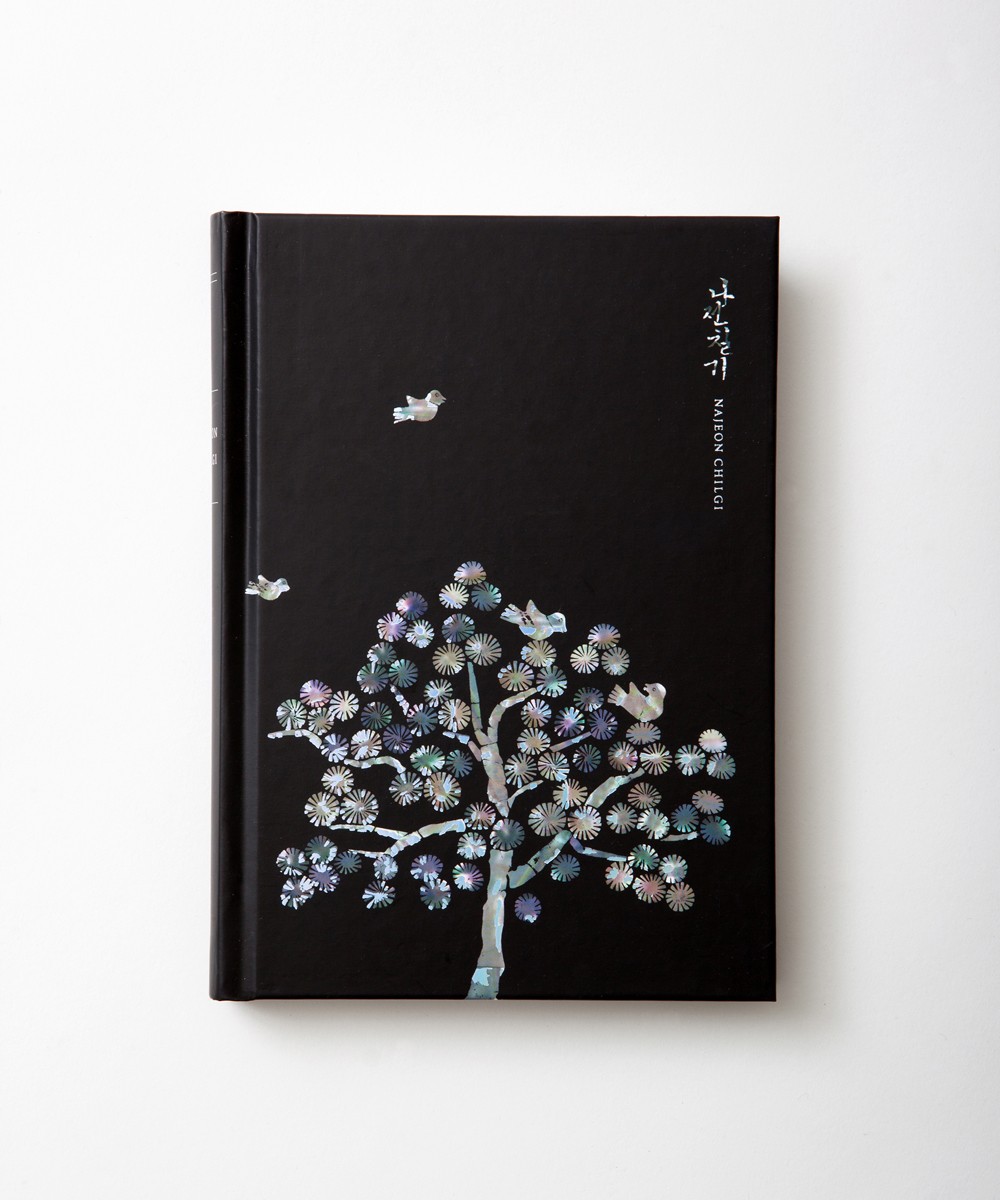
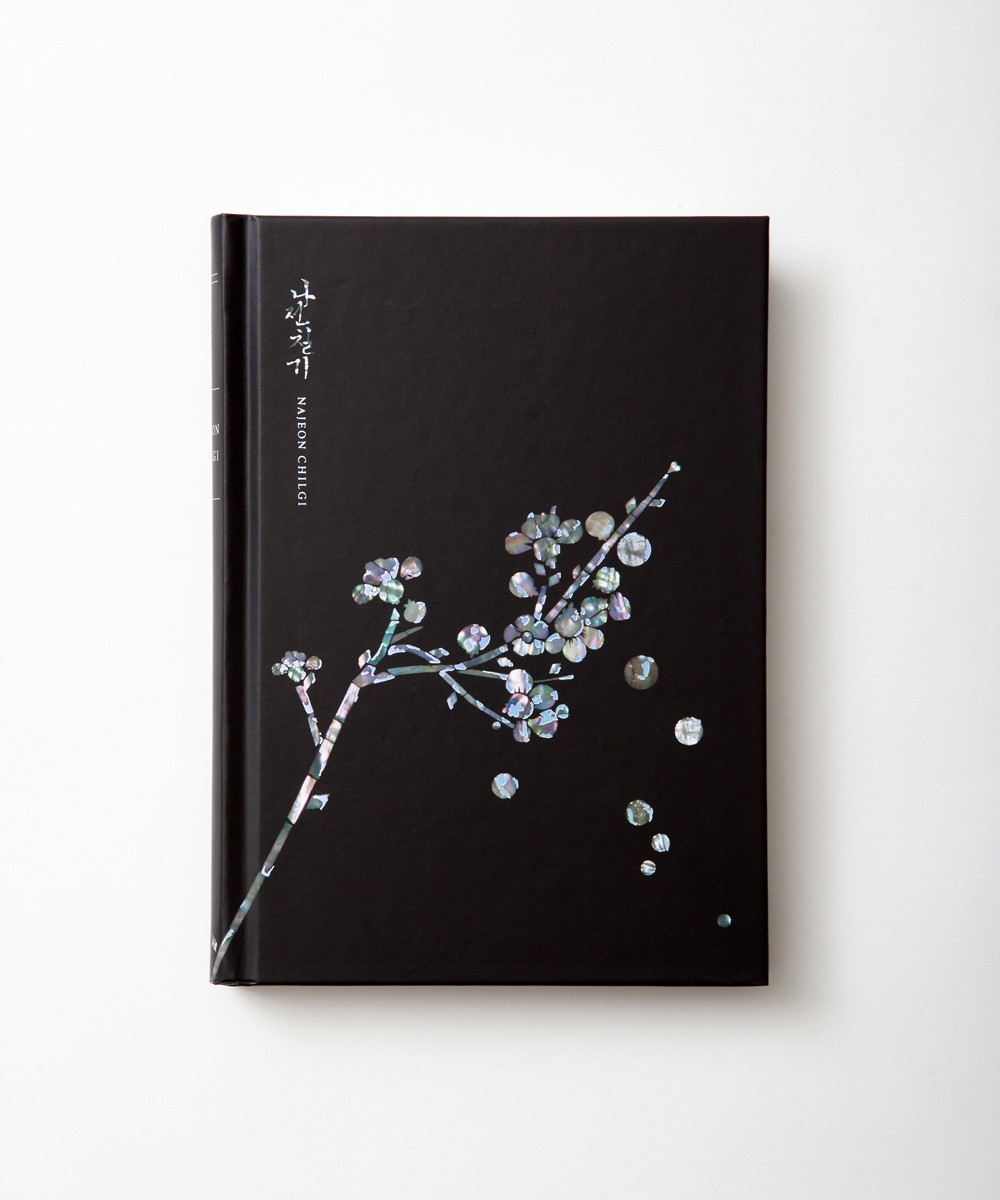
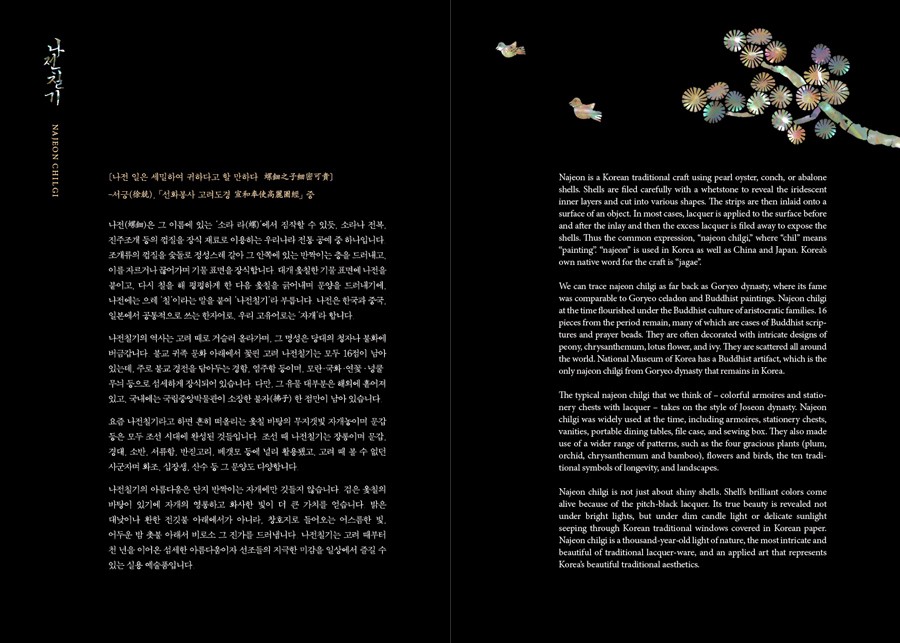
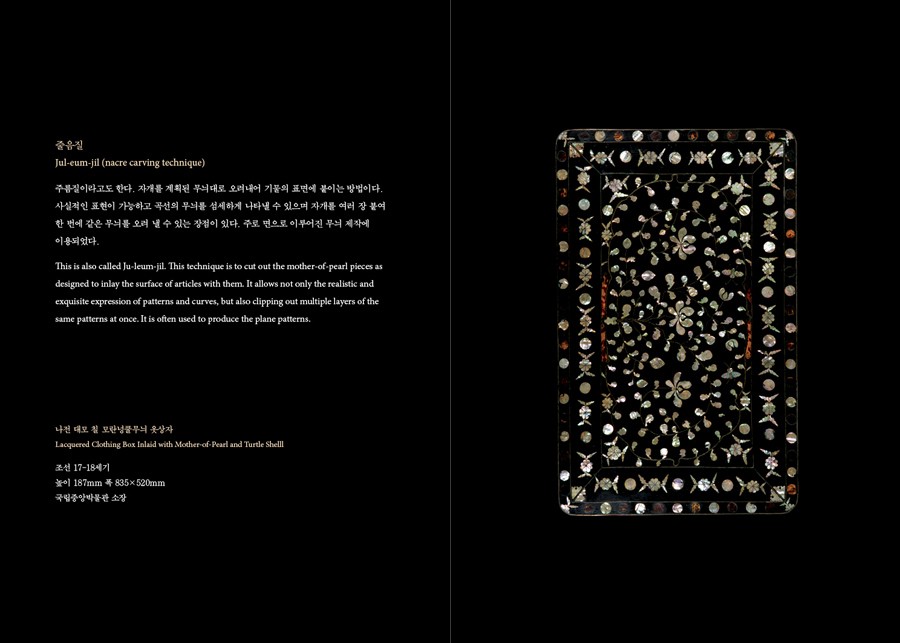
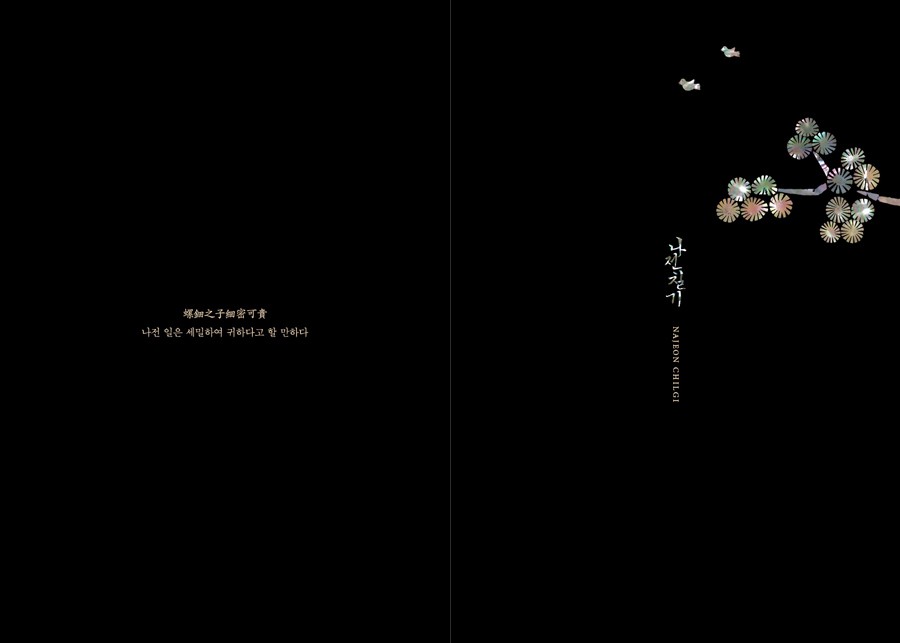

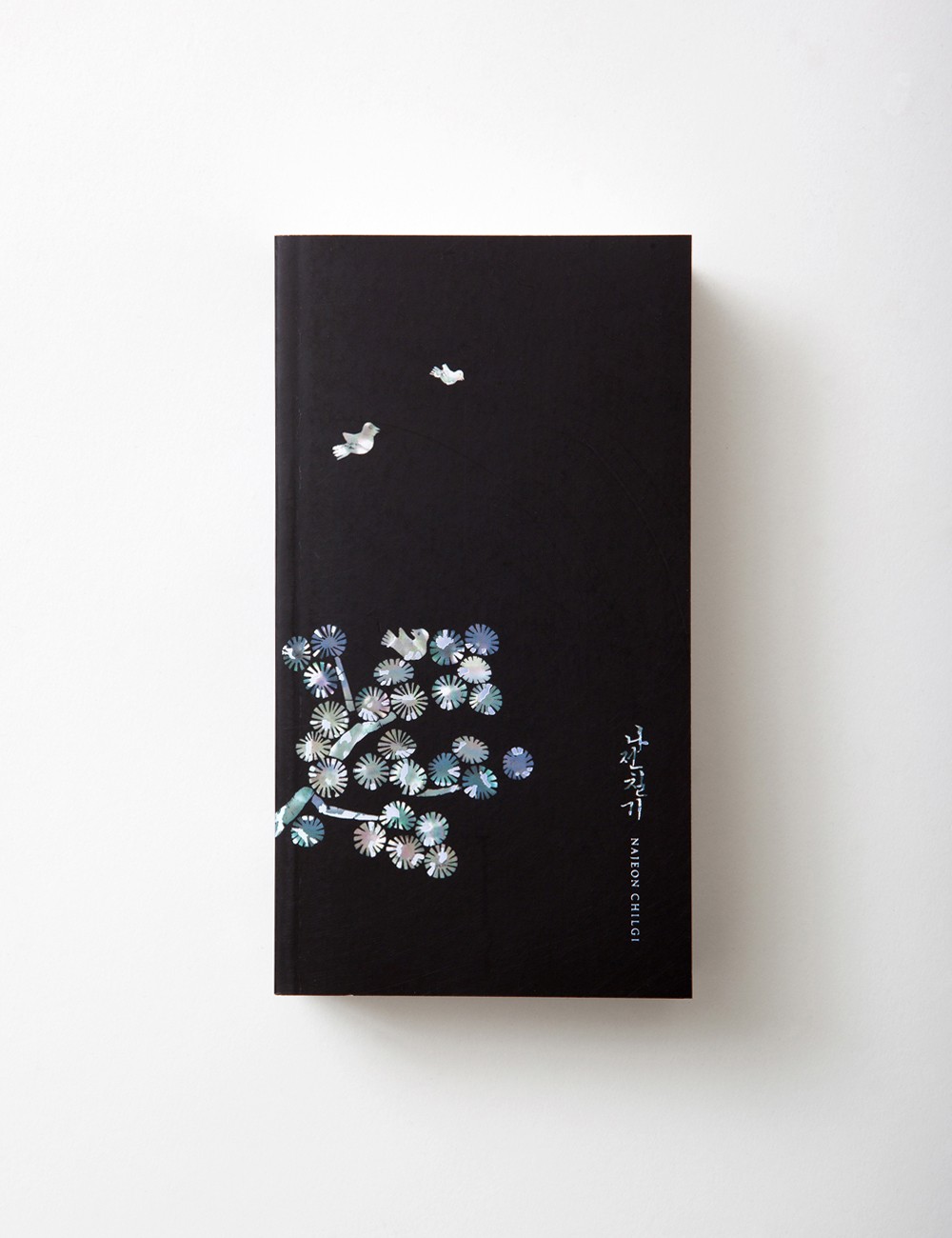

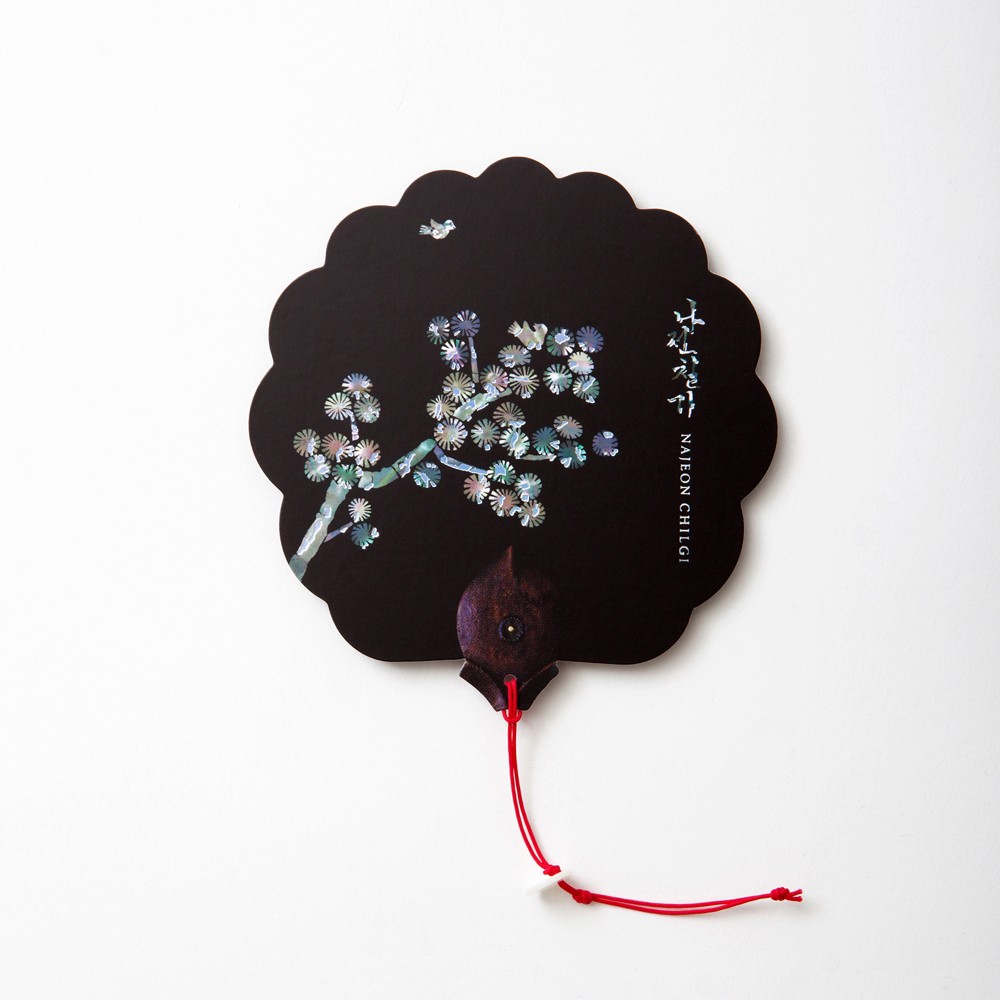
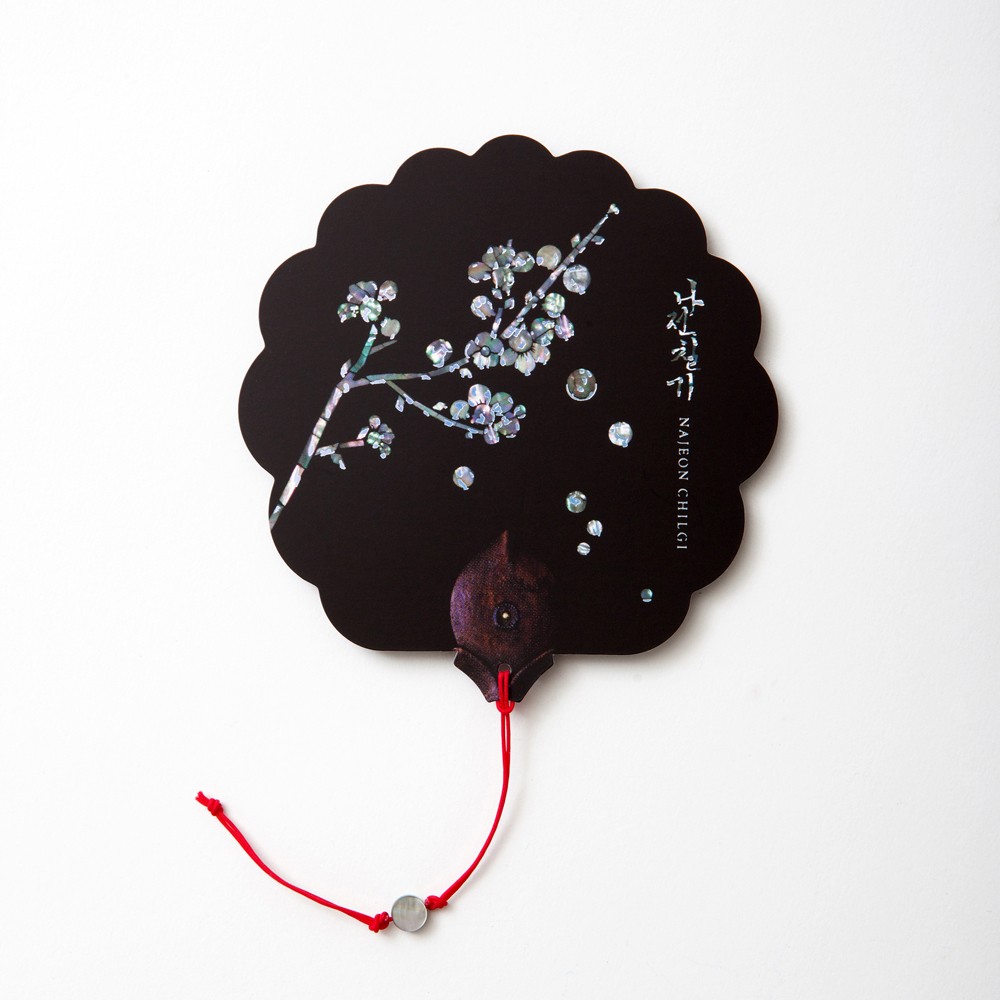
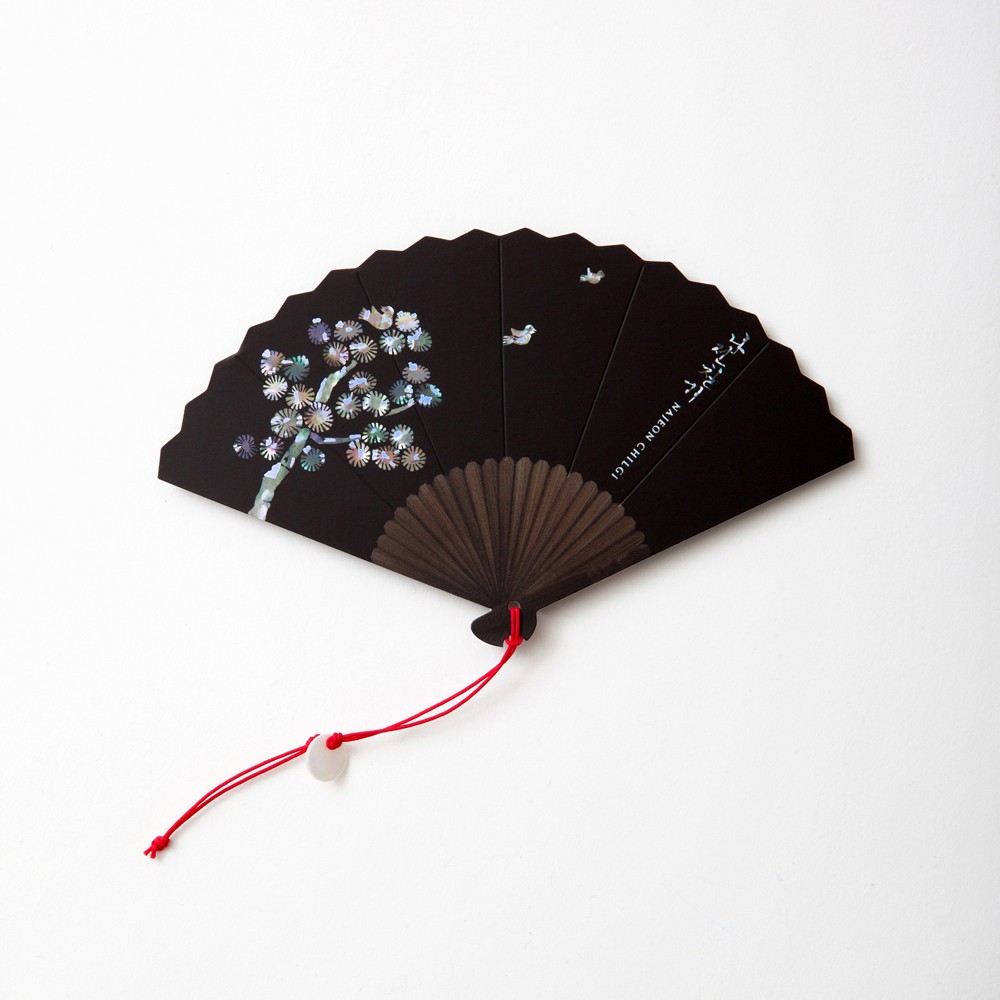
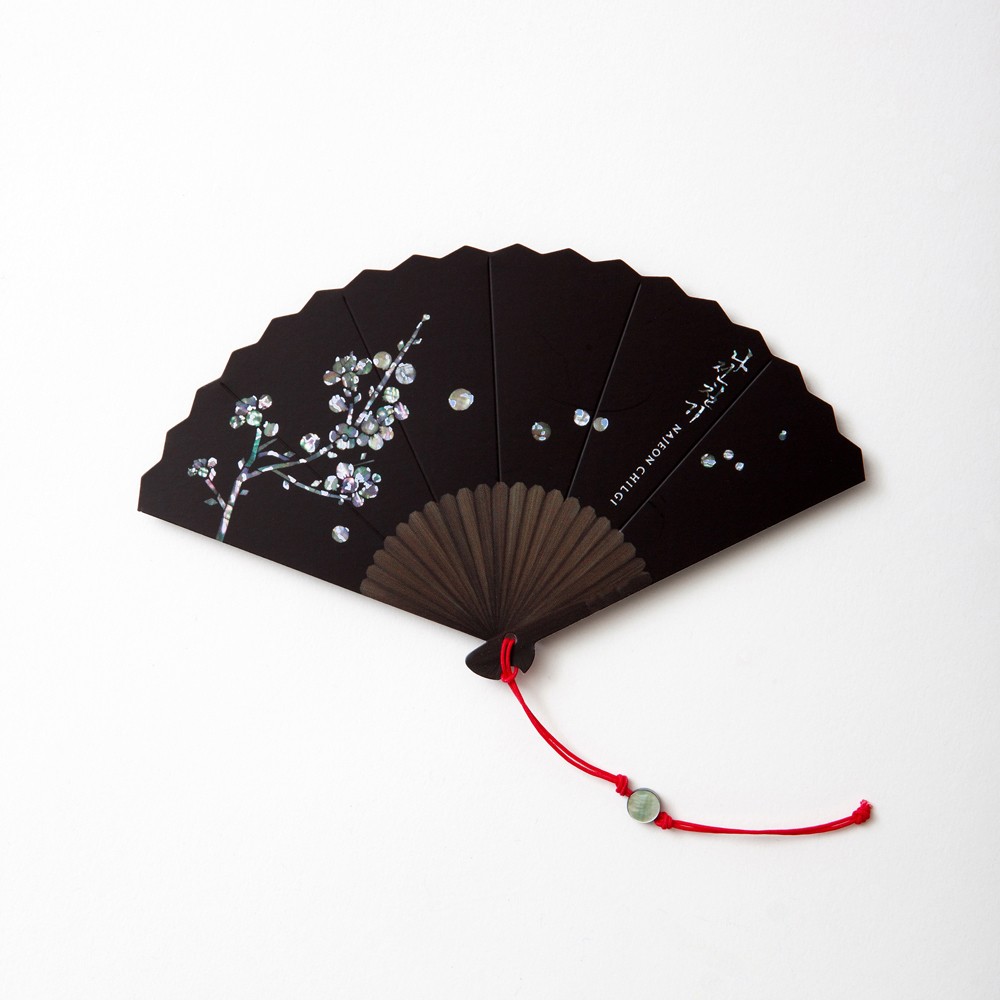
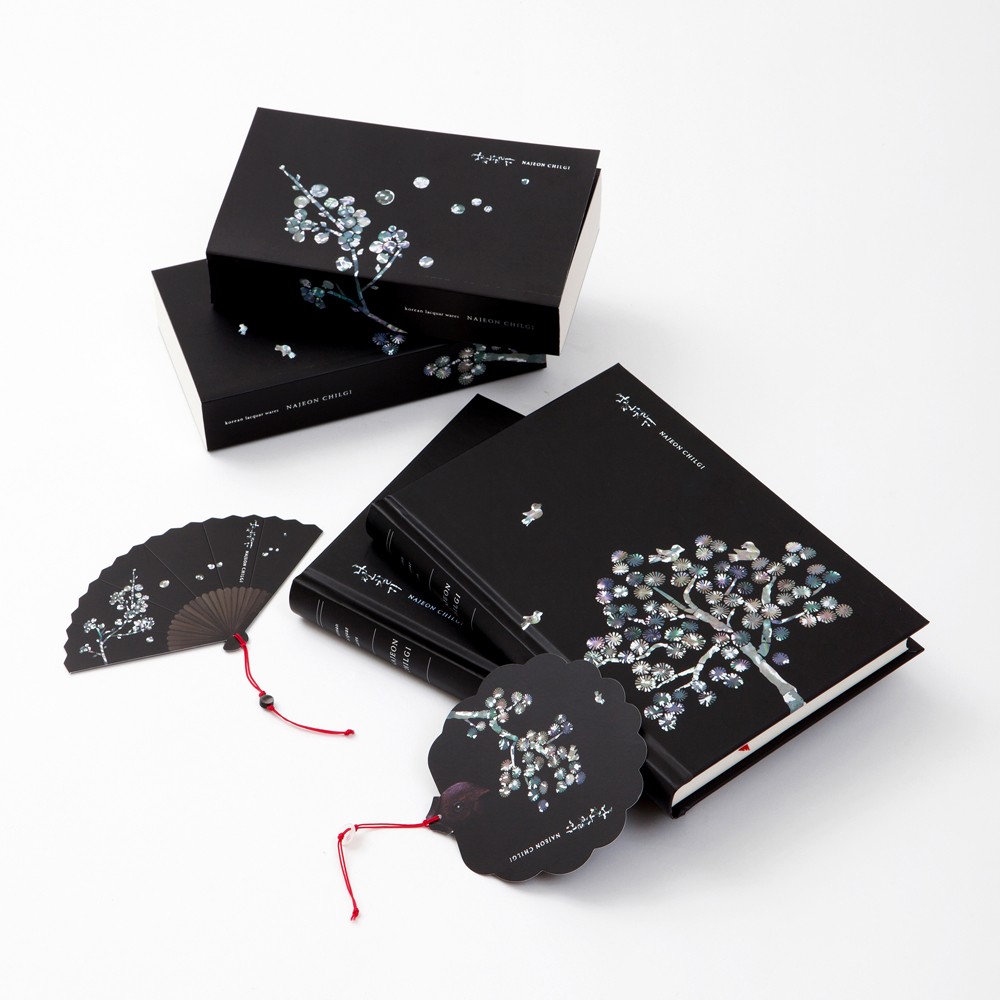
[나전 일은 세밀하여 귀하다고 할 만하다 螺鈿之子細密可貴]
-서긍(徐兢), 「선화봉사 고려도경 宣和奉使高麗圖經」 중
나전(螺鈿)은 그 이름에 있는 ‘소라 라(螺)’에서 짐작할 수 있듯, 소라나 전복, 진주조개 등의 껍질을
장식 재료로 이용하는 우리나라 전통 공예 중 하나입니다. 조개류의 껍질을 숯돌로 정성스레 갈아
그 안쪽에 있는 반짝이는 층을 드러내고, 이를 자르거나 끊어가며 기물 표면을 장식합니다.
대개 옻칠한 기물 표면에 나전을 붙이고, 다시 칠을 해 평평하게 한 다음 옻칠을 긁어내며 문양을 드러내기에,
나전에는 으레 ‘칠’이라는 말을 붙여 ‘나전칠기’라 부릅니다. 나전은 한국과 중국, 일본에서 공통적으로 쓰는
한자어로, 우리 고유어로는 ‘자개’라 합니다.
나전칠기의 역사는 고려 때로 거슬러 올라가며, 그 명성은 당대의 청자나 불화에 버금갑니다.
불교 귀족 문화 아래에서 꽃핀 고려 나전칠기는 모두 16점이 남아 있는데, 주로 불교 경전을 담아두는 경함,
염주함 등이며, 모란·국화·연꽃·넝쿨무늬 등으로 섬세하게 장식되어 있습니다. 다만, 그 유물 대부분은
해외에 흩어져 있고, 국내에는 국립중앙박물관이 소장한 불자(拂子) 한 점만이 남아 있습니다.
요즘 나전칠기라고 하면 흔히 떠올리는 옻칠 바탕의 무지갯빛 자개농이며 문갑 등은
모두 조선 시대에 완성된 것들입니다. 조선 때 나전칠기는 장롱이며 문갑, 경대, 소반, 서류함, 반짇고리,
베갯모 등에 널리 활용됐고, 고려 때 볼 수 없던 사군자며 화조, 십장생, 산수 등 그 문양도 다양합니다.
나전칠기의 아름다움은 단지 반짝이는 자개에만 깃들지 않습니다. 검은 옻칠의 바탕이 있기에
자개의 영롱하고 화사한 빛이 더 큰 가치를 얻습니다. 밝은 대낮이나 환한 전깃불 아래에서가 아니라,
창호지로 들어오는 어스름한 빛, 어두운 밤 촛불 아래서 비로소 그 진가를 드러냅니다.
나전칠기는 고려 때부터 천 년을 이어온 섬세한 아름다움이자 선조들의 지극한 미감을
일상에서 즐길 수 있는 실용 예술품입니다.
Najeon is a Korean traditional craft using pearl oyster, conch, or abalone shells.
Shells are filed carefully with a whetstone to reveal the iridescent inner layers and cut into
various shapes. The strips are then inlaid onto a surface of an object. In most cases,
lacquer is applied to the surface before and after the inlay and then the excess lacquer is filed away
to expose the shells. Thus the common expression, “najeon chilgi” where “chil” means “painting”.
“najeon” is used in Korea as well as China and Japan. Korea’s own native word for the craft is “jagae”.
We can trace najeon chilgi as far back as Goryeo dynasty, where its fame was comparable
to Goryeo celadon and Buddhist paintings. Najeon chilgi at the time flourished under
the Buddhist culture of aristocratic families. 16 pieces from the period remain,
many of which are cases of Buddhist scriptures and prayer beads. They are often decorated
with intricate designs of peony, chrysanthemum, lotus flower, and ivy.
They are scattered all around the world. National Museum of Korea has a Buddhist artifact,
which is the only najeon chilgi from Goryeo dynasty that remains in Korea.
The typical najeon chilgi that we think of – colorful armoires and stationery chests
with lacquer – takes on the style of Joseon dynasty. Najeon chilgi was widely used at the time,
including armoires, stationery chests, vanities, portable dining tables, file case, and sewing box.
They also made use of a wider range of patterns, such as the four gracious plants
(plum, orchid, chrysanthemum and bamboo), flowers and birds, the ten traditional symbols
of longevity, and landscapes.
Najeon chilgi is not just about shiny shells. Shell’s brilliant colors come alive
because of the pitch-black lacquer. Its true beauty is revealed not under bright lights,
but under dim candle light or delicate sunlight seeping through Korean traditional windows
covered in Korean paper. Najeon chilgi is a thousand-year-old light of nature,
the most intricate and beautiful of traditional lacquer-ware, and an applied art that represents
Korea’s beautiful traditional aesthetics.